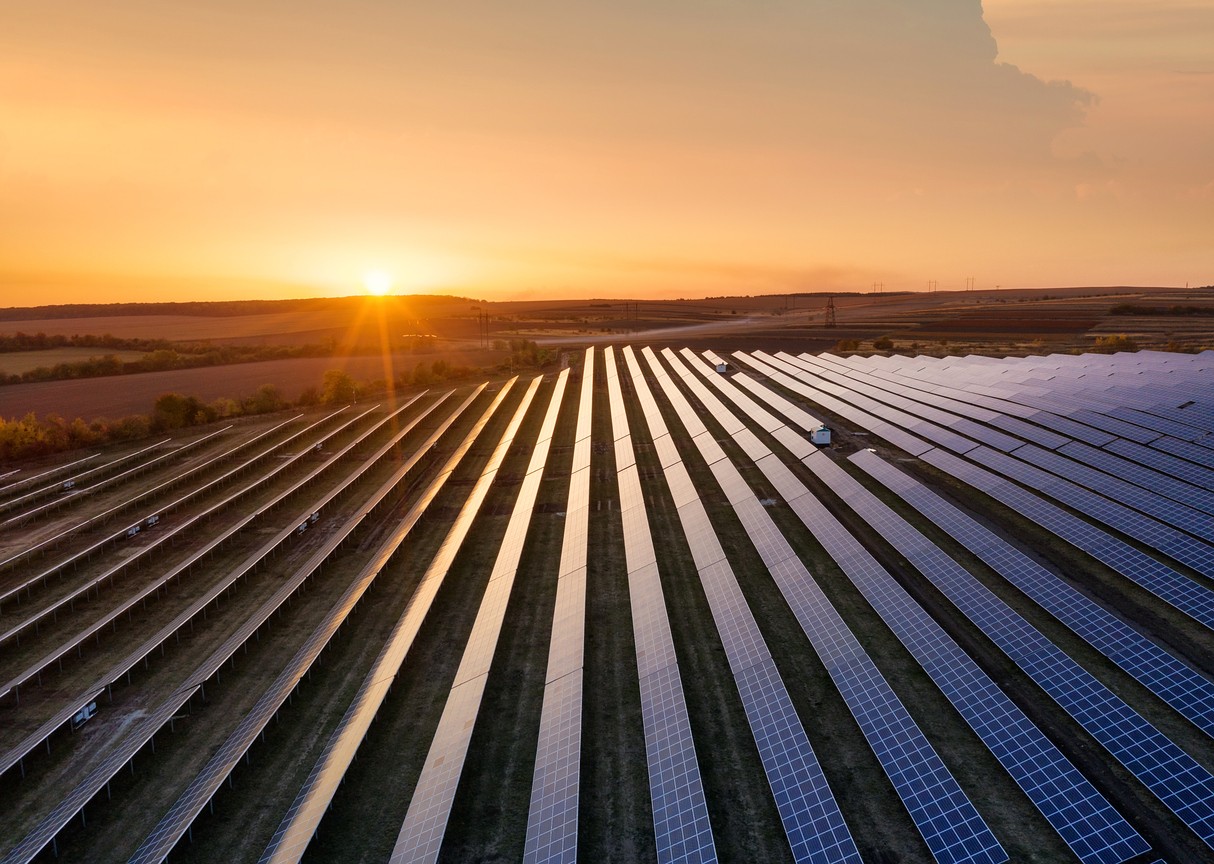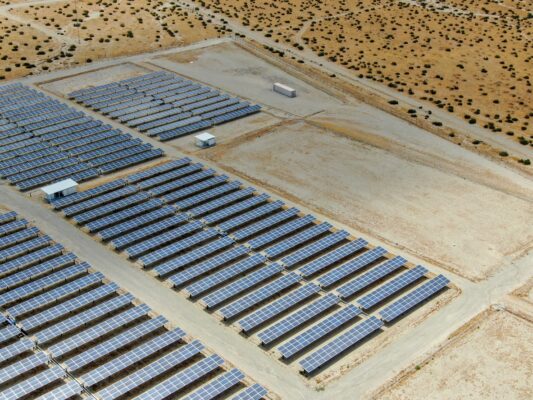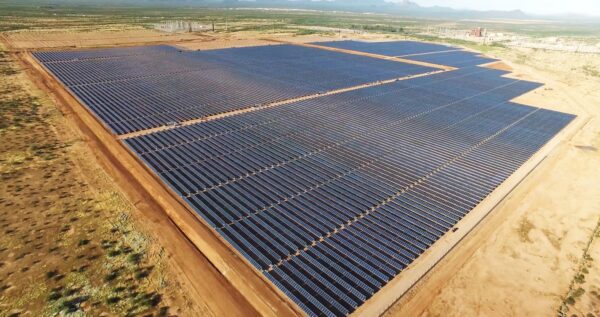
No one can deny that solar power has transferred energy providers’ attention to renewable sources. These renewable sources include solar farms, wind turbines, and hydroelectric power stations. Solar energy farms have proven to be more successful despite all the options due to their low maintenance.
Solar energy is a renewable energy source with many benefits. It has been proven to be the best option countries can rely on to cut carbon emissions and save fossil fuels. Solar farms help with sustainable development.
What Is A Solar Farm?

Solar farms are big-scale solar installations in large areas. These farms harness sunlight into solar energy through photovoltaic (PV) panels and distribute this energy. These solar projects are commonly called solar power stations and solar plants.
They work exactly like any power plant that runs on fossil fuels. However, these commercial solar farms differ from rooftop or commercial solar power systems. Solar panel farms are set up in rural areas where they work smoothly and get a lot of sunlight.
These contribute to power generation on enormous scales, providing power to electric grids. This power is distributed among customers and different stations too.
Types Of Solar Farms
There are two types of solar energy production farms. Utility-scale farms cater to large areas and generate more power, whereas community-scale farms provide electricity on a limited scale. Here’s a detailed insight into both types of solar farms.
1. Utility-Scale Solar Farm

Utility-scale solar farms usually consist of thousands of solar panels in large-scale areas. These systems produce electricity and then distribute it to power lines which carry the electricity to grid stations and then transfer it to homes.
Most of these facilities are working on run-on power purchase agreements. According to this agreement, companies are responsible for generating electricity for certain areas in specific quantities.
Utility-scale farms don’t have any specific electricity generating figure. These farms can be either on a small scale or a large scale. The only way to identify a utility-scale farm is to see if they are providing power to grid stations are not. If they are, then it’s a utility-scale solar farm.
2. Community Solar Farms

Community solar farms are small-scale solar farms producing electricity around 5MW or less than this for small areas or businesses. Anyone taking part in this commercial farm gets a share of their electric power. These farms are run by ordinary people who share the investment in the project. They will get a reduction in their utility expenses depending on the needs of the area’s population.
These panels are set up where they get the most sunlight to run the system effectively. Everyone who participates in the farm construction or shares their part of the investment will get a discount according to the community’s needs. The most effective area for solar panels is one with maximum exposure regardless of trees and buildings’ shadows.
The quantity of electricity produced by the farm and provided to everyone’s homes is handled through virtual net metering. This net metering is an online system that allows credits for energy generated by homes and provided to grid stations. Community solar farms are effective when it comes to small-scale farms. The electricity is provided to homes directly.
How Does Solar Farm Work?
Solar farms work entirely on electricity generated by solar panels. The photovoltaic panel is installed in the fields, generating electricity with sunlight. The sun’s energy is absorbed, and the generators convert it to electricity.
These power stations use semiconductors to change the energy into electricity absorbed through panels. A solar farm is a collection of several solar panels that work together to produce electricity.
These solar panels adjust according to the sun throughout the day. These panels are set on rackings that move through machines from north to south to get the maximum sunlight. Usually, these farms are set on grounds in mountain areas or agricultural areas with no trees so that they work most effectively.
Advantages of Solar Farms

There are many advantages of solar farms in the contemporary world. It helps to rebuild a sustainable world where we can live pollution-free lives. There are many ways solar farms can help the environment and the users.
1. Environment Friendly
Solar farms are environment-friendly as they rely entirely on renewable sources. These farms are built on huge grounds spread around 100 acres with many (photovoltaic) PV plates. These farms are exposed to sunlight.
They absorb sunlight and generate electricity provided to electricity grids and public utilities. These farms produce energy independently and don’t need non-renewable substances like fossil fuels which contribute to environmental damage.
These farms are beneficial for a sustainable environment. They don’t produce any carbon emissions, ultimately saving lives from climate change. They don’t cause any harm to the surroundings and have almost zero effects on the atmosphere.
2. Low Maintenance
These photovoltaic farms generate electricity from sunlight. These farms need minimal maintenance and cleanup only once or twice a year. The panels are reliable enough to last up to 20 years without any additional cost of maintenance or checkup.
There is minimum machinery used in these farms, which means there is no need for technical maintenance from time to time. These farms can store energy and use it later when power is out, so you don’t have to bear any generator cost to access electricity.
3. Less Noise Pollution
The noise pollution in solar farms is comparatively less than in other energy productions. The machinery used in other electricity-producing methods makes a lot of noise, disturbing people in the surrounding areas. The solar panels are extremely quiet, as no generators or machines are used.
4. Technological Advancement
Solar power energy is a technology that is updating with time and is further expected to keep changing to meet the demands of the contemporary world. Innovations in nanotechnology and quantum physics will further intensify the effectiveness of solar energy farms. Technological advancement can triple the production of the solar power system, making them effective at producing electricity.
5. Diverse Application
There are a variety of alternatives for power generation with solar energy. You can produce with heat (solar thermal) or light (photovoltaic). These solar farms can provide light where grid stations are difficult to reach. This light can facilitate people’s water purification process and access power to satellite stations in space.
6. Reduced Bills
The return on investment for solar energy is high, especially in monthly electricity costs. Utilizing the natural resources of our sun results in maintenance costs, providing customers with a more cost-effective energy source. Further lowering the cost of building and producing solar farms is made possible by recent legislative modifications and tax incentives, allowing more to develop that add to the electrical grid.
7. Sustainable
When it comes to solar panel farms, these farms are reliable for so long that you don’t have to worry about energy issues. On the other hand, nonrenewable energies have issues such as shortages of fossil fuels and machinery issues. Solar farms don’t face such issues as no such material is used in the process. Solar panel farms have batteries to store energy so it can be used even at night.
Cost of Setting up A Solar Farm
Several elements contribute to the total cost of setting up a solar farm, including:
- Wiring: Is there electricity on the property? Are there high-voltage wires capable of receiving solar energy?
- Solar Array: How much does the solar array’s equipment cost?
- Permits: How much is the total cost of the licenses and other required paperwork?
- Land: Do you have land to set up a farm, or will you have to buy it? Is the land cleaned, or do you have to hire someone to clean it? What are the requirements for land?
- Labor: How much will be spent on labor to hire electricians and set up crews?
Renewable energy production is expected to reduce the cost of electricity production to nearly half by 2035 because of commercialized solar power generation.
The installation cost of commercial solar farms might differ from state to state. One acre of solar panel farm generates about 351MWh of electricity per year. The farm’s profit depends on its scale; if it is on a large scale, the profit will be more.
Coldwell Solar Solar Farm Projects
Businesses are gradually turning to alternative energy sources like solar energy to play their part in protecting the environment. Solar farms are a fantastic business prospect for those looking to launch their venture because they are both profitable and environmentally friendly, making them a win-win. In the realm of solar energy, there is a one-time investment, but the lifetime return is significant.
If you want to learn more about solar farms and their environmental contribution, feel free to contact Coldwell Solar. We additionally help build solar farms for our customers. Check out some of our projects here.

